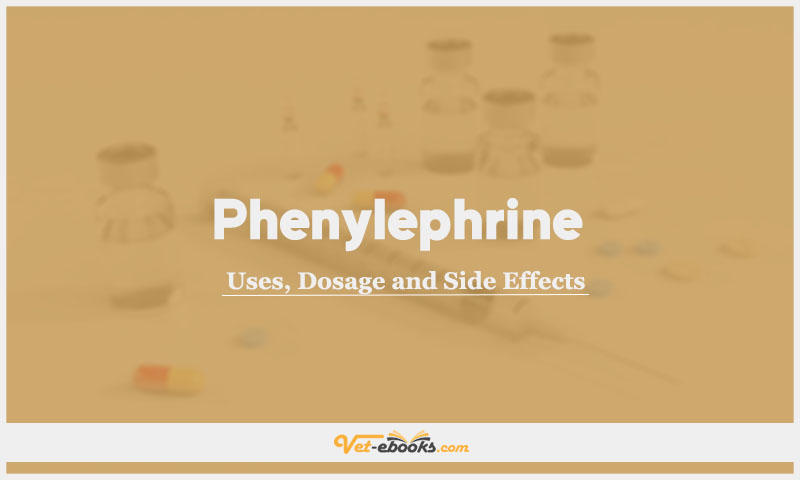Phenylephrine In Dogs & Cats: Uses, Dosage and Side Effects

Overview
- Alpha-1 selective adrenergic agonist that causes peripheral vasoconstriction when given i.v., resulting in increased diastolic and systolic blood pressure, a small decrease in cardiac output and an increased circulation time.
- Directly stimulates the alpha-adrenergic receptors in the iris dilator musculature.
Uses of Phenylephrine
- Phenylephrine is utilized alongside fluid therapy to address hypotension resulting from drug effects or vascular failure.
- When applied topically to the eye, it induces vasoconstriction and pupil dilation.
- Ophthalmic applications involve facilitating mydriasis before intraocular surgery, distinguishing between superficial and deep vasculature, and minimizing haemorrhage during eye surgery.
- Additionally, it aids in diagnosing Horner’s syndrome by assessing the time to pupillary dilation after topical administration, where shorter times suggest lesions closer to the iris.
- The use of 10% phenylephrine can expedite mydriasis in post-ganglionic lesions.
Dose of Phenylephrine in Dogs and Cats
Dogs:
Hypotension:
- Correct blood volume then infuse 0.01 mg/kg very slowly i.v. q15min.
- Continuously monitor blood pressure if possible.
Ophthalmic use:
- 1 drop approximately 2 hours before intraocular surgery (for mydriasis).
- 1 drop as a single dose for vasoconstriction.
- 1 drop of 1% solution to both eyes for diagnosis of Horner’s syndrome.
Cats:
Ophthalmic use: as for dogs (NB: ineffective for mydriasis as sole agent).
Drug Dosage Calculator
You Should Give:
Side Effects of Phenylephrine in Dogs and Cats
- These include hypertension, tachycardia, and reflex bradycardia.
- Extravasation injuries can be serious (necrosis and sloughing).
Contraindications of Phenylephrine in Dogs and Cats
- No information is available.
- Care in cats and small dogs; use lower concentrate solutions.
- Do not apply once ophthalmic surgery has started (to avoid direct arterial absorption).
Some Notes:
- There is a risk of arrhythmias if phenylephrine is used in patients receiving digoxin or with volatile anaesthetic agents.
- When used concurrently with oxytocic agents the pressor effects may be enhanced, leading to severe hypertension.
Tip
Do You Want To Increase Your Veterinary Knowledge and Practical Skills?
You Can Now Browse and Download +3000 Books For Veterinary Professionals & Students Online.
Download Veterinary Books




















